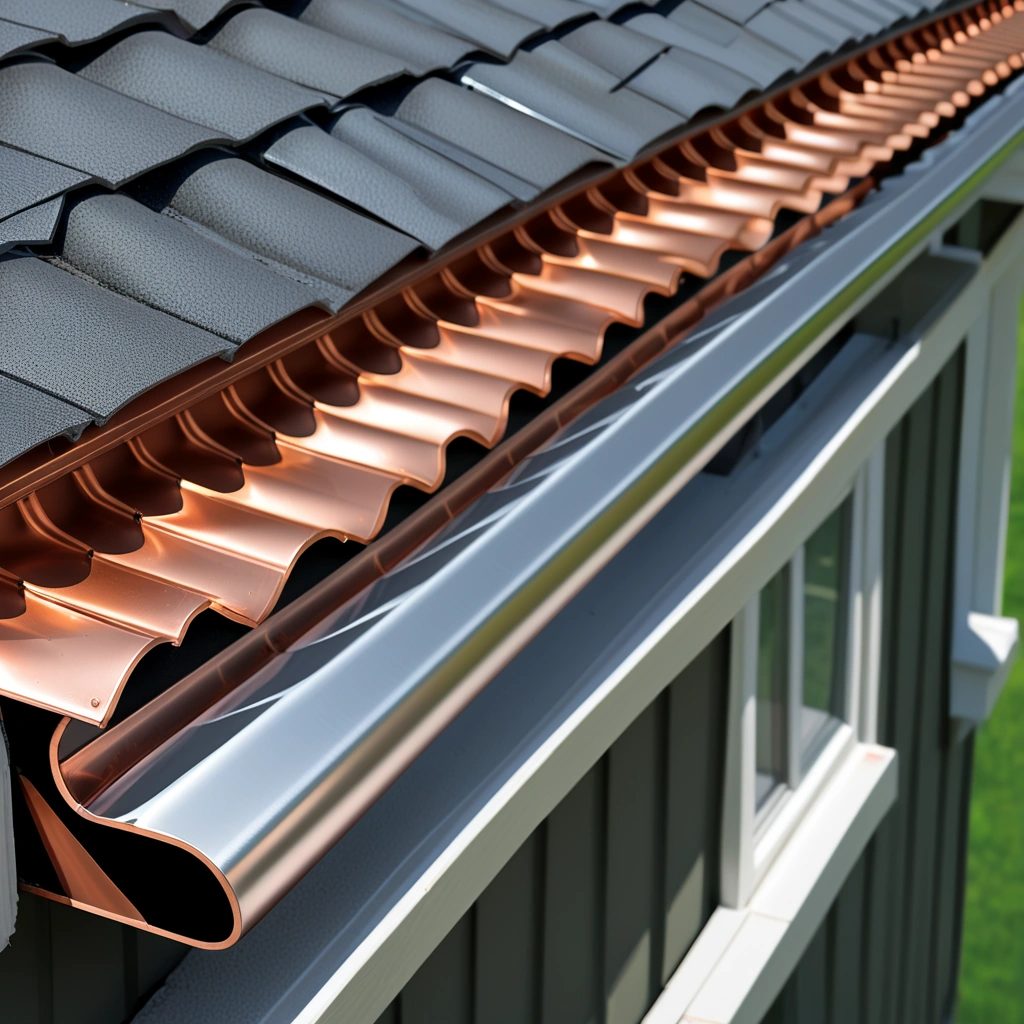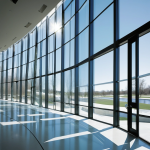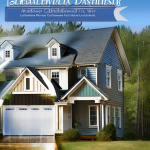Gutter Material Comparison: Choosing the Best Gutters for Your Home (Aluminum, Vinyl, Steel, Copper & More)
Introduction: The Silent Guardian of Your Home – Choosing Wisely
The unsung hero of home maintenance, gutters quietly safeguard your property from water damage. They channel rainwater away from your foundation, siding, and landscaping, preventing costly repairs down the line. Effective gutter systems are paramount not only for structural integrity but also for preventing issues like basement flooding, soil erosion, and damage to exterior paint. With a bewildering array of gutter materials available, how do you choose the best option for your home and budget?
This guide provides a comprehensive comparison of common gutter materials, empowering you to make an informed decision. Like choosing the right investment strategy, selecting the appropriate gutter material requires careful consideration of various factors, including upfront gutter cost, long-term durability, aesthetic preferences, and environmental impact. This is especially relevant for those managing properties for diplomatic households, where maintaining a pristine and well-functioning home is paramount. Selecting the right gutter material is a critical home improvement decision that directly impacts both the maintenance needs and the exterior design of your property.
For instance, while aluminum gutters offer a balance of affordability and functionality, homeowners in areas with heavy snowfall might find that steel gutters, or even the more robust galvanized steel gutters, provide superior resistance to bending and damage. Conversely, in coastal environments, the corrosion resistance of copper gutters or specialized aluminum alloys could outweigh their higher initial gutter installation cost. Understanding these trade-offs is essential for making a choice that aligns with your regional climate and aesthetic goals.
The best gutters not only perform their primary function but also complement the architectural style of your home, enhancing its curb appeal and overall value. Beyond material selection, consider the long-term implications for maintenance and potential repairs. Vinyl gutters, while inexpensive, are prone to cracking and warping, leading to frequent replacements. This constant cycle of repair and replacement can ultimately negate any initial cost savings. On the other hand, copper gutters, though a significant upfront investment, boast exceptional longevity and require minimal maintenance, potentially lasting for a century or more.
Factors such as the ease of gutter installation, the availability of seamless options (which minimize leaks), and the potential for professional installation versus DIY should also factor into your decision-making process. Furthermore, the environmental impact of different gutter materials, including their recyclability and embodied energy, is an increasingly important consideration for environmentally conscious homeowners. Ultimately, the ‘best gutters’ for your home are the ones that strike the optimal balance between cost, durability, aesthetic appeal, and maintenance requirements, all while effectively channeling water away from your property.
This guide will delve into the specifics of various gutter materials, including aluminum gutters, vinyl gutters, steel gutters, copper gutters, and even less common options like stainless steel gutters and wood gutters, providing you with the knowledge needed to make an informed and confident decision. We will explore the pros and cons of each material, offering insights into their performance in different climates, their aesthetic qualities, and their long-term cost-effectiveness. By understanding these nuances, you can ensure that your gutter system provides reliable protection and enhances the beauty of your home for years to come.
Aluminum Gutters: The Affordable and Versatile Option
Aluminum gutters represent a sweet spot for many homeowners, balancing affordability with respectable performance. Their popularity stems from their relatively low gutter cost and ease of gutter installation compared to heavier materials like steel or copper gutters. Available in a spectrum of colors, aluminum gutters can seamlessly integrate with any exterior design, boosting curb appeal without breaking the bank. The inherent malleability of aluminum also allows for on-site customization, ensuring a precise fit for even the most unconventional rooflines.
This adaptability makes them a favorite among contractors and DIY enthusiasts alike when selecting the best gutters for a project. However, the lightweight nature of aluminum, while advantageous for installation, also contributes to its primary weakness: susceptibility to damage. Heavy snow loads, falling branches, or even ladder mishaps can easily dent or bend aluminum gutters. While minor imperfections may not compromise functionality, significant damage can impede water flow and necessitate repairs or replacement. In regions prone to harsh weather conditions, consider opting for thicker gauge aluminum or incorporating gutter guards for added protection.
The lifespan of 20-30 years is typical, but proactive maintenance, including regular cleaning to prevent debris buildup, can extend their service life and mitigate potential problems. Despite these limitations, aluminum remains a compelling choice, particularly when budget is a primary concern. When evaluating gutter materials, remember that aluminum offers a recyclable advantage, aligning with environmentally conscious building practices. While not as robust as steel gutters or as aesthetically striking as copper gutters, aluminum provides a reliable and cost-effective solution for protecting your home from water damage. Homeowners should weigh the initial savings against the potential for future repairs, considering their local climate and the level of protection required. Ultimately, aluminum gutters represent a practical and versatile option in the diverse landscape of gutter solutions, offering a balanced approach to performance and value.
Vinyl Gutters: The Budget-Conscious Choice with Trade-offs
Vinyl gutters present themselves as the quintessential entry-level option in the realm of gutter materials, primarily due to their exceptionally low gutter cost. This affordability makes them an attractive proposition for homeowners operating under stringent budgetary constraints or those undertaking short-term property improvements. The ease of gutter installation associated with vinyl is another significant draw; their lightweight nature allows for relatively straightforward DIY projects, potentially saving on professional labor costs. However, it’s crucial to recognize that this initial cost-effectiveness comes with inherent trade-offs in terms of durability and longevity, making them a less compelling choice when considering the long-term protection of your home.
Despite their appealing price point and ease of installation, vinyl gutters exhibit a number of vulnerabilities that homeowners should carefully consider. Their inherent composition renders them susceptible to environmental stressors; extreme temperature fluctuations can cause vinyl to become brittle and prone to cracking in colder climates, while intense heat can lead to warping and distortion. These issues not only compromise the gutter’s functionality but also detract from the overall aesthetic appeal of the home’s exterior.
Furthermore, the limited color options available for vinyl gutters can restrict design choices, potentially clashing with the existing architectural style and color palette of the property. When comparing vinyl gutters to other options like aluminum gutters or galvanized steel gutters, the difference in resilience becomes readily apparent. Considering the environmental impact is also paramount when evaluating vinyl gutters. Unlike some other gutter materials, vinyl is not easily recyclable, contributing to landfill waste at the end of its lifespan.
This factor aligns with the growing emphasis on sustainable building practices and eco-conscious decision-making in home improvement. While vinyl gutters may offer immediate savings, the long-term costs associated with potential repairs, replacements, and environmental concerns should be carefully weighed against the benefits of more durable and sustainable options like copper gutters or even stainless steel gutters. Ultimately, the choice of the best gutters depends on a holistic assessment of budget, climate, aesthetic preferences, and environmental responsibility. Homeowners should carefully research all available gutter materials to ensure they select the option that best meets their specific needs and priorities.
Galvanized Steel Gutters: Strength and Durability with Maintenance Considerations
Galvanized steel gutters offer a robust alternative to aluminum and vinyl, providing enhanced strength and durability for homeowners seeking a more resilient gutter system. The galvanization process, involving the application of a protective zinc coating, shields the underlying steel from rust and corrosion, significantly extending the lifespan of the gutter. While this coating provides substantial protection, it’s not impervious; over time, exposure to the elements can cause it to degrade, necessitating periodic maintenance. When considering gutter materials, galvanized steel presents a middle-ground option in terms of gutter cost, balancing affordability with long-term performance.
This makes galvanized steel gutters a compelling choice for those prioritizing longevity and structural integrity without venturing into the premium price range of copper. The lifespan of galvanized steel gutters, typically ranging from 15 to 25 years, is directly influenced by environmental factors and the diligence of maintenance practices. Regular inspections are crucial to identify any signs of rust or damage early on. Maintaining these gutters generally involves periodic cleaning to remove debris and, most importantly, painting to reinforce the protective barrier against moisture.
Selecting a high-quality, rust-inhibiting paint is essential for maximizing the lifespan of galvanized steel gutters, particularly in regions with high humidity, frequent rainfall, or coastal environments with salt-laden air. Neglecting these maintenance steps can accelerate corrosion, diminishing the gutter’s effectiveness and potentially leading to costly repairs or premature replacement. Understanding the maintenance requirements is key when evaluating if galvanized steel gutters are the best gutters for a specific property. From an exterior design perspective, galvanized steel gutters present a distinct industrial aesthetic that can complement certain architectural styles, particularly modern or utilitarian designs.
While the raw, metallic look may not appeal to all homeowners, galvanized steel offers the flexibility of being painted to match or accentuate a home’s exterior. This ability to customize the color allows homeowners to integrate the gutters seamlessly into their overall design scheme. However, it’s important to note that painting galvanized steel requires proper preparation, including thorough cleaning and priming, to ensure proper adhesion and prevent peeling. When considering gutter installation, it’s advisable to seek professional assistance to ensure correct fitting and sealing of seams, minimizing the risk of leaks and maximizing the gutter’s performance.
Although not as visually striking as copper gutters or as subtly integrated as aluminum gutters, galvanized steel provides a functional and customizable option. While galvanized steel gutters offer a blend of durability and affordability, it’s important to consider their environmental impact compared to other gutter materials. Steel is a recyclable material, which is a positive attribute. However, the galvanization process itself can involve environmentally harmful chemicals. Alternatives like stainless steel gutters offer similar strength and corrosion resistance without the environmental concerns associated with galvanization, though they typically come at a higher gutter cost.
Ultimately, the choice of gutter materials involves weighing factors such as cost, durability, aesthetic appeal, and environmental considerations. For homeowners seeking a balance between these factors, galvanized steel gutters represent a viable option, provided they are committed to performing the necessary maintenance to ensure their longevity and performance. Comparing galvanized steel gutters to aluminum gutters, vinyl gutters, and even wood gutters requires careful consideration of these factors in relation to the homeowner’s specific needs and priorities.
Copper Gutters: The Premium Choice for Longevity and Aesthetics
Copper gutters represent the pinnacle of gutter materials, embodying a fusion of unparalleled durability, enduring longevity, and a distinctive aesthetic that evolves gracefully over time. Their signature characteristic is the development of a rich patina, a natural oxidation process that transforms the initially bright, reflective surface into a spectrum of bronze and green hues. This patina not only enhances the visual appeal of a home’s exterior design but also acts as a protective layer, further extending the lifespan of the gutters.
While the initial gutter cost is significantly higher than alternatives like aluminum gutters or vinyl gutters, copper’s inherent resistance to corrosion and the elements translates to minimal maintenance and a lifespan that can easily surpass 50 to 100 years, making them a worthwhile investment for discerning homeowners. Beyond their functional advantages, copper gutters offer a unique aesthetic appeal that can significantly enhance a home’s curb appeal and potentially increase its property value. The warm, natural tones of copper complement a wide range of architectural styles, from traditional to contemporary.
While stainless steel gutters offer similar durability, they lack the visual warmth and character that copper provides. The sophisticated look of copper gutters adds a touch of elegance and timelessness, making them a popular choice for historic homes, high-end residences, and those seeking to make a statement with their exterior design. Professional gutter installation is recommended to ensure proper fitting and long-term performance, further safeguarding the investment. However, the elevated gutter cost associated with copper makes it crucial to consider the potential for theft, particularly in areas with high metal prices.
While less common than theft of aluminum or steel gutters, copper’s value can make it a target. Homeowners should explore security measures, such as installing security cameras or using specialized fasteners, to deter potential thieves. Despite this concern, the exceptional lifespan, minimal maintenance requirements, and the fact that copper is a highly recyclable material, position copper gutters as an environmentally responsible choice. Considering all factors, copper gutters stand as a testament to enduring quality and aesthetic refinement in home improvement, offering long-term value that transcends the initial investment when compared to galvanized steel gutters or even wood gutters.
Decision-Making Framework: Choosing the Best Gutters for Your Home
Choosing the right gutter material is a crucial decision that impacts your home’s protection and long-term value. Consider these seven key factors: 1. Budget: How much are you willing to spend upfront? 2. Climate: What are the typical weather conditions in your area (snow, rain, heat, etc.)? 3. Durability: How long do you want your gutters to last? 4. Maintenance: How much time and effort are you willing to invest in gutter maintenance? 5. Aesthetics: What look are you trying to achieve for your home? 6.
Environmental Impact: Are you concerned about the environmental impact of your gutter material? 7. Installation: Are you comfortable with DIY installation, or will you hire a professional? DIY installation can save money, but professional installation ensures proper fit and function. Like any strategic decision, selecting the right gutter material requires a careful assessment of your individual needs and priorities. The interplay between gutter cost and lifespan is a critical consideration. While vinyl gutters represent the most accessible entry point in terms of initial investment, their susceptibility to damage from UV exposure and temperature fluctuations often leads to more frequent replacements.
Conversely, copper gutters, while significantly more expensive upfront, offer unparalleled longevity and develop a desirable patina over time, potentially increasing a home’s curb appeal. Aluminum gutters and galvanized steel gutters provide a middle ground, balancing affordability with reasonable durability, though the latter requires diligent maintenance to prevent rust. Stainless steel gutters offer enhanced corrosion resistance compared to galvanized options, but typically come at a higher price point. Even wood gutters, while aesthetically unique, demand specialized upkeep and are less common today.
The method of gutter installation also warrants careful thought. While some homeowners may be tempted by the cost savings associated with DIY gutter installation, improper installation can lead to a host of problems, including leaks, sagging, and even detachment from the fascia board. Professional gutter installation ensures proper slope, secure attachment, and watertight seams, ultimately maximizing the gutter system’s effectiveness and lifespan. Furthermore, consider the specific needs of your home’s architecture. Homes with complex rooflines may benefit from seamless aluminum gutters, which are custom-fabricated on-site to minimize the number of joints and reduce the risk of leaks.
Determining the best gutters also depends on regional factors; areas with heavy snowfall may necessitate stronger materials like steel or copper to withstand the added weight. Ultimately, selecting the optimal gutter material involves a holistic assessment that balances budgetary constraints, aesthetic preferences, and the specific demands of your local climate and architectural style. Remember to research and vet contractors thoroughly, ensuring they possess the necessary expertise and insurance to complete the job to your satisfaction. Just as a well-chosen paint color can enhance a home’s exterior, the right gutter system not only protects your investment but also contributes to its overall aesthetic appeal. Keeping abreast of industry advancements and seeking expert advice will empower you to make an informed decision that safeguards your home for years to come.


